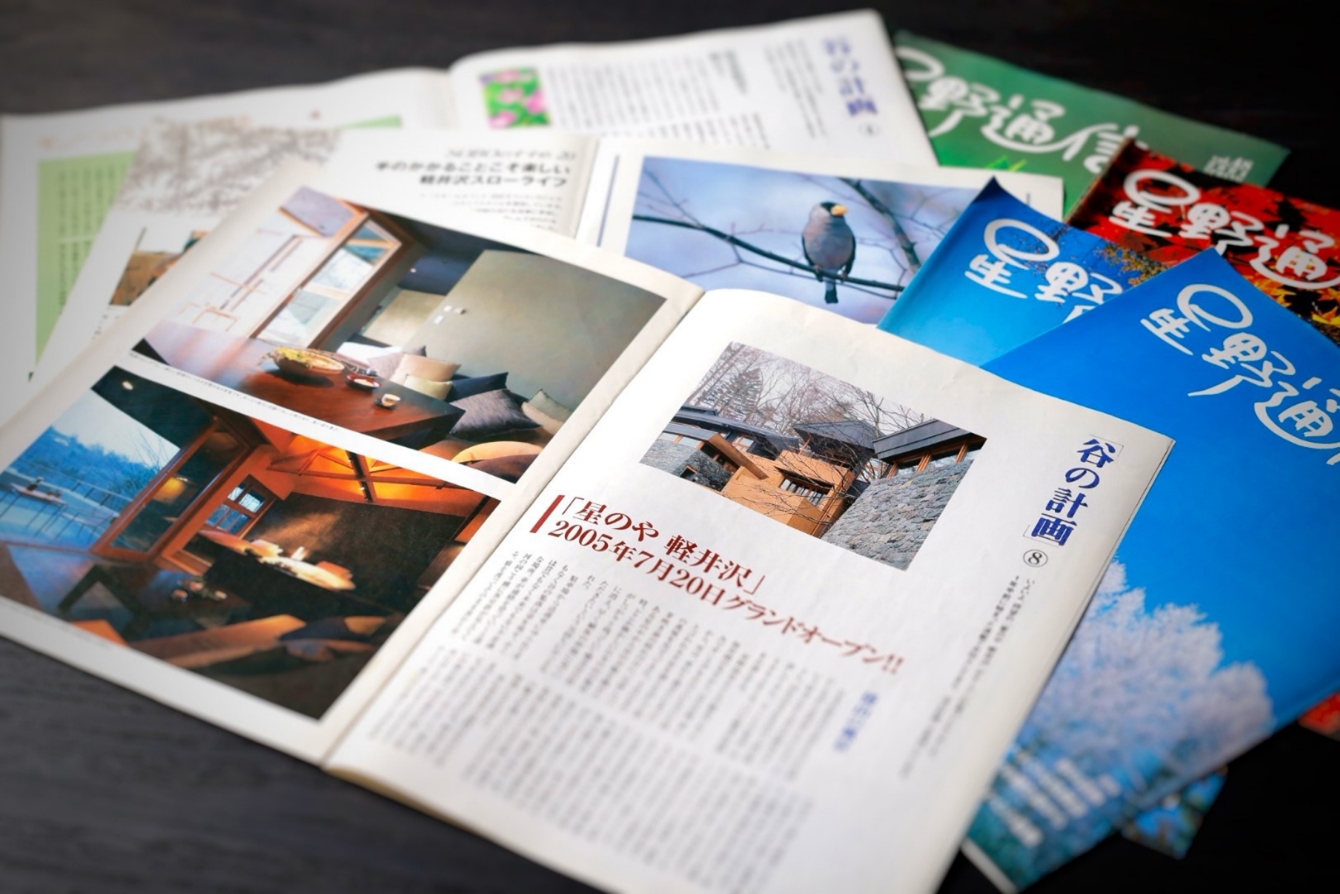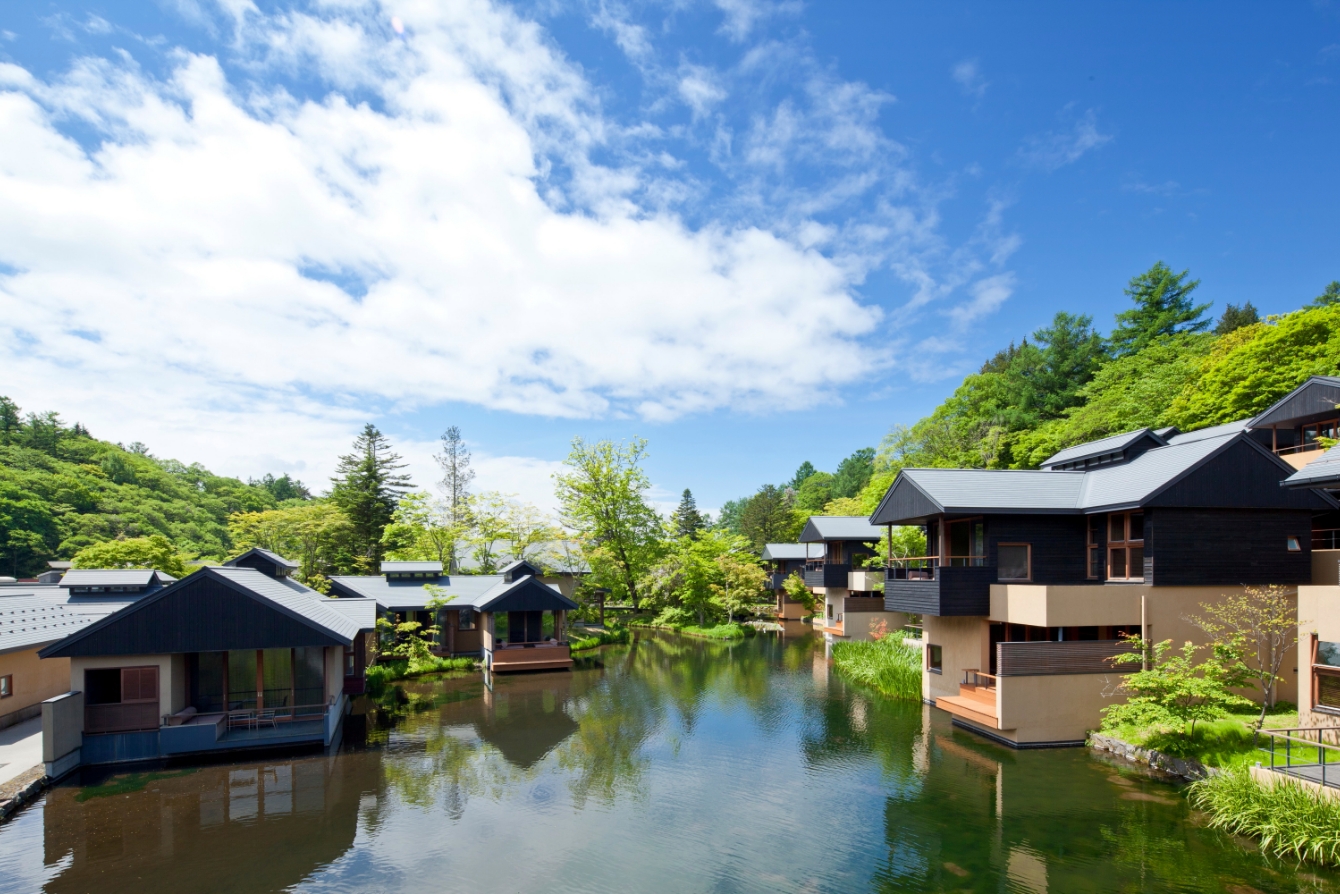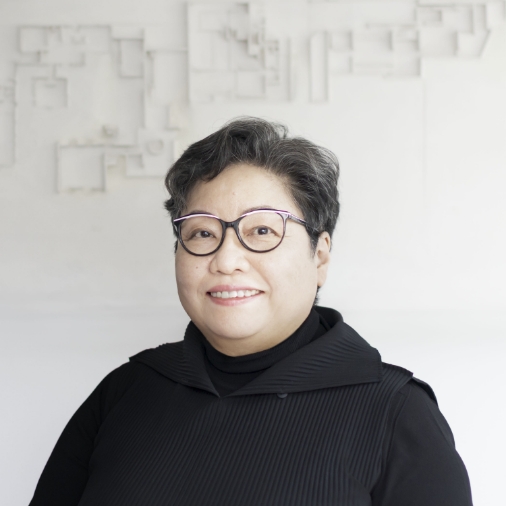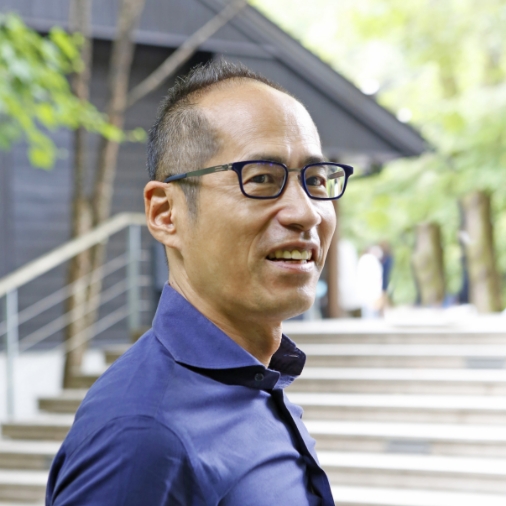Column

Rie HigashiRepresentative Director, Higashi Environmental and Building Research Institute
建築 家
Hiroki HasegawaRepresentative Director, Onsite Planning and Design Office
landscape architect
建築 家
landscape architect
What is the relationship between the two of you and the Karuizawa Hoshino area?
Rie Azuma (hereinafter referred to as Azuma-san):I used to go to Karuizawa often to work with my father, but it was around the mid-1990s that I became involved with the Hoshino area as an architect. He was asked to renovate Hotel Breston Court and other properties by his classmate from Cornell University's graduate school days, Yoshiji Hoshino. After that, the project to revitalize the Hoshino Onsen area got into full swing, and I designed ``Tombo no Yu'' and other facilities.
Mr. Hiroki Hasegawa (hereinafter referred to as Mr. Hasegawa):I got connected to Karuizawa at the exact time of that project.
Mr. Azuma:Since it was a large scale story, I wanted to work on it as a team. I would like to work with someone who can not only do landscaping but also design landscapes. With this in mind, I contacted Onsite, a team of landscape architects, and met Mr. Hasegawa.
Mr. Hasegawa:I had never worked on a resort before, so I still remember vividly the first meeting where I outlined my vision for a resort. I experienced the first resort boom when I was a student and had a kind of allergy to resorts, but at that time CEO Hoshino told me, ``Don't flatter Western culture.'' So I was able to agree with it wholeheartedly.
Mr. Azuma:I think that Mr. Hoshino has always thought that it is important to be conscious of Japan. When you live in America, you have no choice but to confront your own identity. When designing "Hoshinoya Karuizawa", the president's words became a major theme, and as a result, rather than creating a traditional Japanese building, we considered the modern evolution of Japanese culture while incorporating a perspective that pursues the essence of Karuizawa, such as natural energy and protecting trees.
Mr. Hasegawa:When we designed HOSHINOYA Karuizawa, there was a particularly heated discussion.
Mr. Azuma:Yeah. At that time, we had different points of focus, so we often argued about the layout of the building. Things like relocating buildings to protect trees. The adjustment was both difficult and interesting.
Mr. Hasegawa:The layout of the building affects the foundation of the landscape, so we couldn't compromise.
Mr. Azuma:Now that I think about it, I really learned what landscape design is through HOSHINOYA Karuizawa. It's all about "creating a landscape." By the time I started working on Harunire Terrace, I was aware of this, so I thought the main thing was the landscape design, and the building was a part of that, so I think the process went relatively smoothly.

Please tell us about any memorable experiences you had in the Karuizawa Hoshino area where you could "enjoy the forest and get to know it."
Mr. Azuma:What I feel is unique is that there is a hydroelectric power plant in the forest. Since the time when Hoshino Onsen Ryokan was founded, we have been committed to preserving coexistence with nature, and we were the first in Japan to install a full-scale, small-scale private hydroelectric power plant, drawing water from a river. I think this is a major feature of the Karuizawa Hoshino area and makes it attractive. Also, the Japanese elm tree is also distinctive. It wasn't until I decided to design Harunire Terrace that I realized that the area is blessed with beautiful Harunire trees.
Mr. Hasegawa:While I was commuting there for work, I was so fascinated by the area that I bought land and even built a house there (lol), and this area has a great ``forest'' quality to it. In other words, there is a good mix of places where the wild lives and the traces of human hands. Therefore, anyone can easily interact with the forest. I would lie down on the nap deck of Harunire Terrace while drinking coffee.
Also, the presence of "Picchio" is huge. When you take part in a nature tour and come into contact with the vegetation, and when you hear things like, ``Animals come through these trails to get water,'' your knowledge increases and your understanding of the forest improves. There is a lot of content here.
Mr. Azuma:There was originally a movement to increase the number of deciduous broad-leaved trees in the Hoshino area. After the war, a large number of Karamatsu were planted mainly in Kita Karuizawa in anticipation of demand for wood, but efforts are being made to regenerate deciduous broad-leaved forests that produce humus.
Mr. Hasegawa:Deciduous broad-leaved forests are the most ecologically stable type of forest in this area at an altitude of 1000 meters. Trees that produce fruit, such as acorns and horse chestnuts, provide a livelihood for squirrels, flying squirrels, and birds. This has always been taken into consideration during the renewal process, and efforts are continuing to plant native species such as dogwood and Quercus japonica.
Mr. Azuma:There are many people at Hoshino Resorts who seriously care about the forest, both now and in the past. I think so.
What are your expectations for the Karuizawa Hoshino area, which has celebrated its 110th anniversary?
Mr. Hasegawa:There are many mountain resorts in Japan, but I think the appeal of Karuizawa lies in the harmony between the forest and the city. So, although overtourism is now being seen as a problem, I feel that if there were too many tourists, the charm of Karuizawa would diminish. I want the Karuizawa Hoshino area to become a model of a place that balances the pleasures of the forest with the pleasures of the city.
Mr. Azuma:I'm with you. I grew up in Harajuku during the bubble era, and there were huge crowds on weekends, and many residents moved elsewhere. A similar phenomenon occurred in SoHo, New York. Budding artists moved in, tourists started coming by tour bus, and the original residents dispersed to places like Tribeca. If things are not properly controlled at some point, there is a risk that the people who have created the charm of the area will no longer be there. I would like to see the Karuizawa Hoshino area develop while maintaining an appropriate scale. I'm looking forward to it.


Rie HigashiRepresentative Director, Higashi Environmental and Building Research Institute
建築 家
Born in Osaka in 1959. She studied architecture at Japan Women's University, the University of Tokyo Graduate School, and Cornell University Graduate School, and later became a partner of her father, architect Takamitsu Higashi. In addition to designing the Hoshino area of Karuizawa, including Hoshinoya Karuizawa, she also designs many accommodation facilities and residences.

Hiroki HasegawaRepresentative Director, Onsite Planning and Design Office
landscape architect
Born in Chiba Prefecture in 1958. After completing graduate school at the University of Oregon, he worked in the United States until 91. After he returned to Japan, he and a partner established an on-site planning and design firm, which continues to this day. In addition to designing the Hoshino area of Karuizawa, including Hoshinoya Karuizawa, he has also undertaken numerous landscape designs.

The Hoshino area is a place where you can experience the world of "In Praise of Shadows"

The Hoshino area has the potential to become a hub for environmental education.

Enchanted by Karuizawa, where you can vividly experience the changing seasons

It has always been and will continue to be a place where everyone can gather and talk.

Aiming to create a future where people and bears can live together

I hope that you will continue to improve your "curation skills" in the future.

A turning point in my career as an artist occurred with the Karuizawa Hoshino area




